An English landscape is characterized by sweeping vistas across rolling lawns, distant groves of trees, natural ponds and lakes, discreetly placed Greek and Roman "ruins," and a sense of pastoral peacefulness. It's a parklike setting that represents the landscape of the English Isles and much of North America.
This is not the English cottage garden look, with its masses of uncontained annuals and perennials, nor is it the French-style garden set in a strict geometric pattern. In fact, the first English gardens were designed in the early 1700s as a reaction to the formality of the latter. The goal was a natural landscape, albeit one that was prettied up and romanticized to conceal the mundane and unattractive parts.
While the gardens designed by Lancelot (Capability) Brown define the basic elements of an English garden, the style itself has grown and changed over the past 300 years. It's been modified to include influences from China and Gothic Revival architecture, as well as the sweeping flower beds popularized by Gertrude Jekyll.
Although most of us don’t have grand estates, some basics of the style can be applied even to the smallest garden.
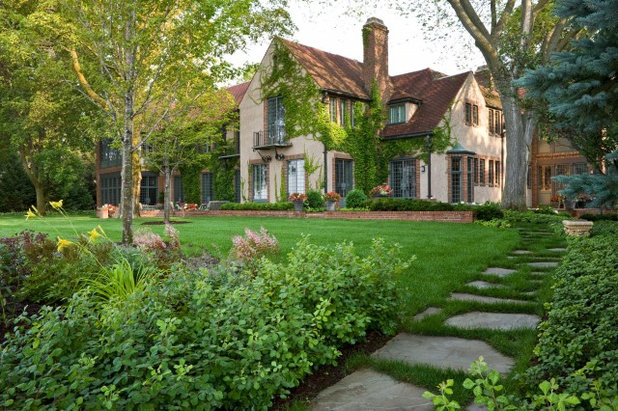
Windsor Companies
For many people, the term English garden is synonymous with traditional garden design. Whatever you call it, capturing the feel of a home set in the midst of a green, parklike area is key. The large lawn and stately trees are the starting point. There's a sense of flow between every part of the garden rather than separation.
Design tip: Lush greenery is a key feature of this style. If you live in a climate where water is scarce, the look may not be the best choice. If you want to try to replicate it, look for plantings that have the same feel but are drought-tolerant, and consider scaling the look back or incorporating it in a smaller area.
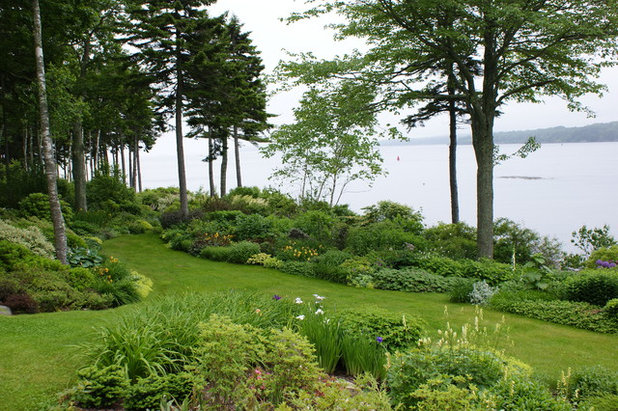
www.KarlGercens.com
Embrace the view whenever possible. If you have a lake or mountain in the distance, this obviously is an easier task. In this instance, rather than a simple expanse of lawn down to the shoreline, a mix of shrubs and trees adds depth and height to the vista.
Planting beds filled with shrubs farther up in the yard play the same role that walls and stepping stones or walkways would in other settings: They draw the eye toward and edge the approach to the water.
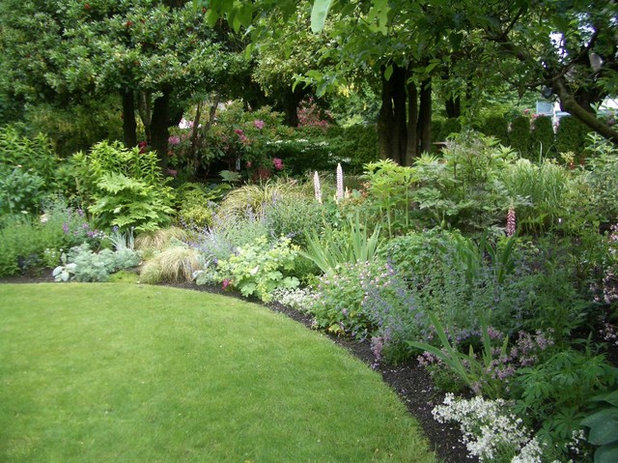
Glenna Partridge Garden Design
If your yard ends at a fence rather than a body of water, you can still use the same principles. A border filled with shrubs and trees helps disguise the fence line and adds interest and depth to the space.
Design tip: While a unique tree or shrub always creates a focal point, don't go overboard on variety, especially in a larger planting bed. Planting several of the same shrub or tree throughout the space helps ground and balance the overall design.
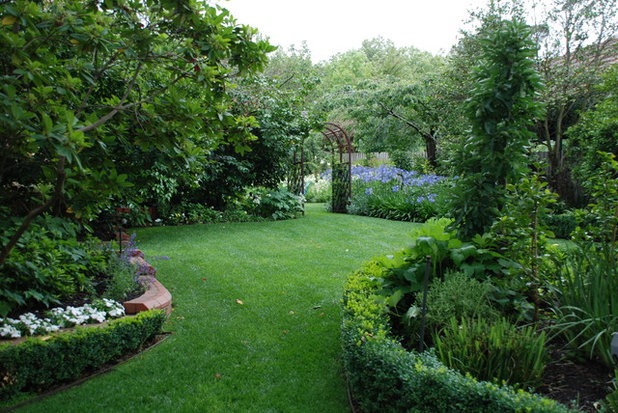
Andrew Renn
Add curves. One of the hallmarks of English landscaping is the movement away from rigid geometric garden beds and toward serpentine shapes. In this case, the arch of the arbor leading into a secondary "room" echoes the curve of the garden beds. The use of plants rather than formal walls lends a cohesive feel to the entire space.
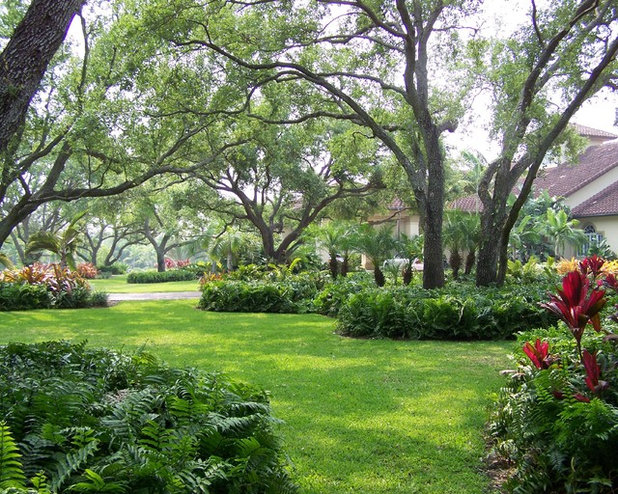
orlando comas, landscape architect.
Smaller circles create curves within this space and also help set off the individual trees. It's a lush look that will work all year round in the right climate.
Design tip: Not all trees do well with plantings underneath; many, in fact, will suffer from overwatering or root competition. Check with your nursery or local gardening experts before planting.
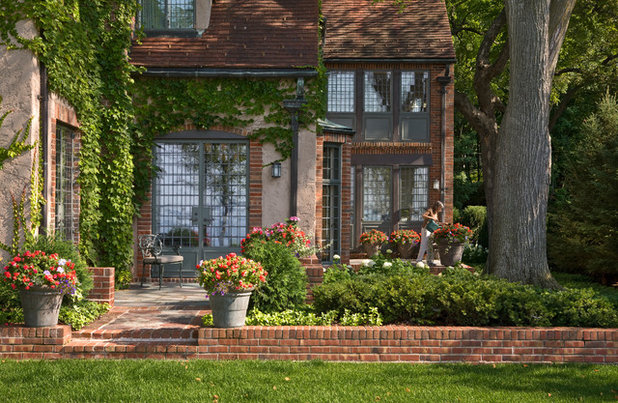
Windsor Companies
Formality is still possible. As this landscape style developed, the transition from strictly formal to natural happened gradually, and the same approach can be used in your own garden. Keep the formal areas near the house, to complement the architecture and provide a spot to sit and enjoy the rest of the space.
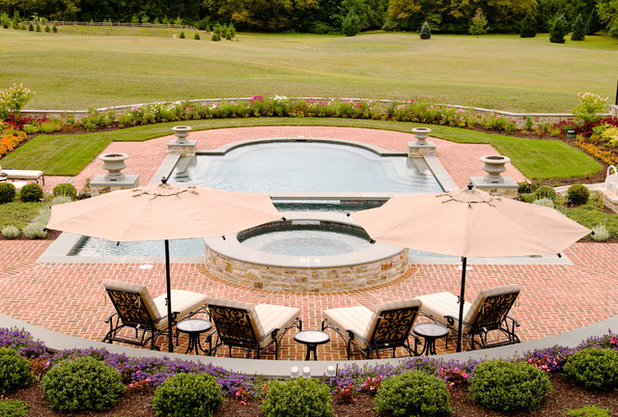
The Outdoor Room, LLC
This modern estate showcases the juxtaposition of formal and informal. Near the house lie a formal seating area and pool; in the distance, a large meadow and forest. In between the two, unobtrusive but important, is the "ha-ha," a uniquely English feature. This low wall separates the formal from the informal, and in days past, kept livestock from wandering too close to the house.
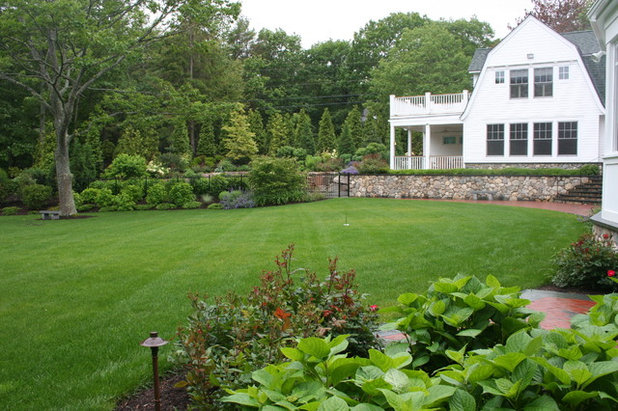
Woodburn & Company Landscape Architecture, LLC
Here's another view of the same type of separation. Although it's not a true ha-ha, the raised patio area with its supporting wall gently separates the spaces and provides a sitting area that lets guests take in the garden view. From this angle, it also provides a nice transition between garden and house.
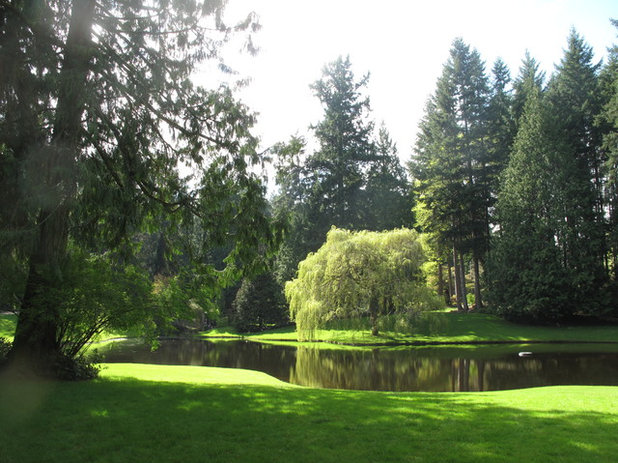
Debra Prinzing
Make water a highlight. In an ideal world, this water feature would be part of your English landscape. If you don't have a preserve in your backyard, it's probably out of the question. Still, a small water feature with a gently curving outline, edged with grass rather than stones or concrete, might be a possibility.
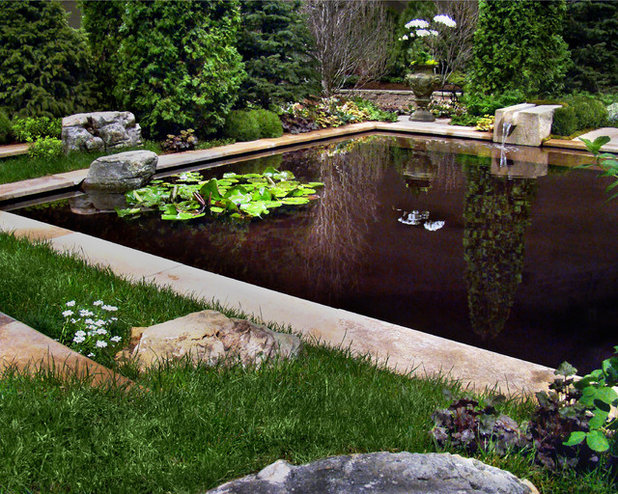
Laughing Waters, Inc
Although the look of this small pool isn't strictly natural, it still works. This pool combines two principles of the English landscape: a water feature and the appearance of a Roman ruin. It's also a good choice for a smaller space where a large natural pond isn't practical.
Design tip: Adding a formal pool next to a patio is a nice way to make the transition from formal areas next to the house to a more nature-like garden beyond. The lines of the pool play off the formality; the water softens the overall look.
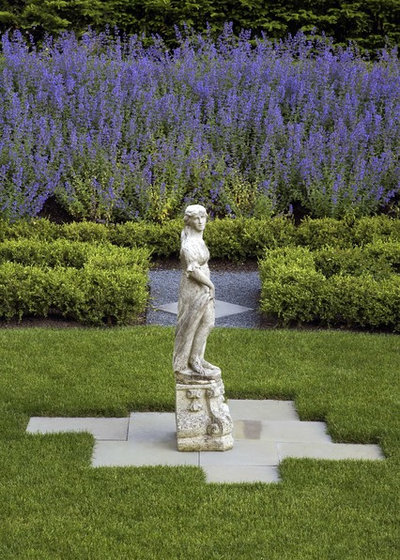
Schmechtig Landscapes
Add a sense of antiquity. A classical statue, a Chinese pagoda, a tea house — all are possiblities, depending on your personal style and taste. While the statue and pagoda may be primarily decorative, a tea house or gazebo in a classical style can add extra living space to your yard.
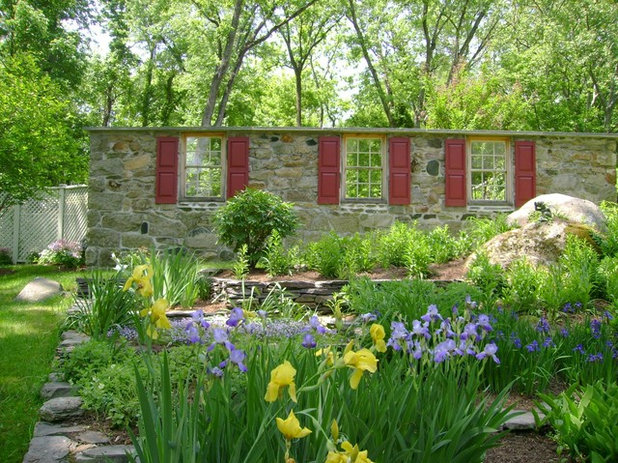
Slater Associates Landscape Architects
You can also create your own ruins. A slightly crumbling wall (designed with safety in mind) can add dimension without overwhelming the space. In this case, it also serves as a backdrop for a "secret" garden — and what could be more English-inspired than that?
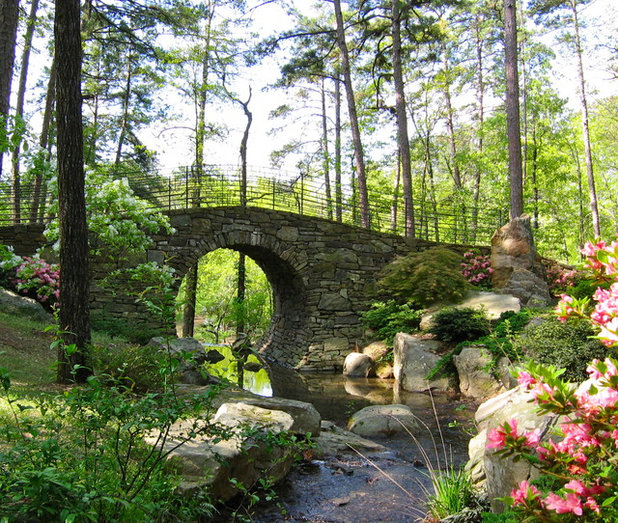
MESA Landscape Architects, Inc
Bridges also are a popular design choice for this landscape style. Although you needn't reach the heights of this example, yours should have the same sense of being weathered, yet permanent — this is not the time to look for low wooden walkways or a modern, angular design.
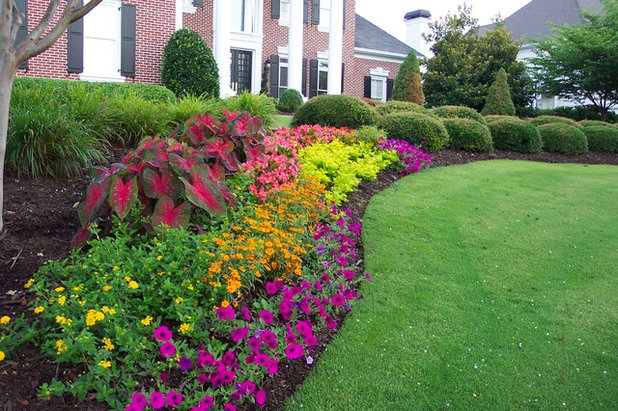
jenny_hardgrave
Keep flower beds contained. While the original landscapes were focused on greenery rather than color, flowers could and did make their way into the design. The difference between these flower beds and those of English landscapes' more enthusiastic cousins, cottage gardens, is the sense of order. The beds are neatly edged, both with the lawn and with bedding plants, and nothing is too riotous.
Design tip: Adding masses of annuals in one color keeps the look more formal. Consider it a type of color blocking within your garden.
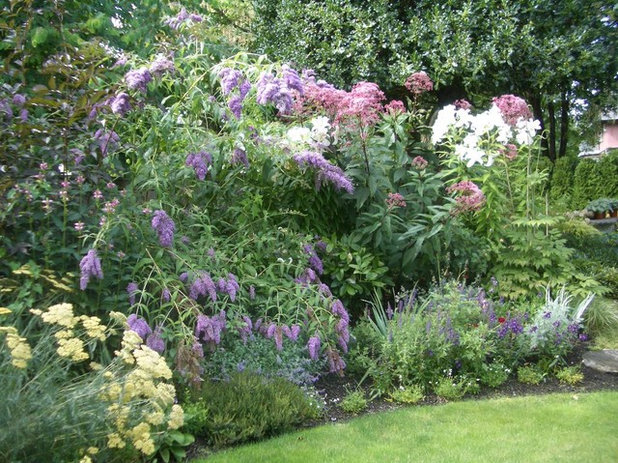
Glenna Partridge Garden Design
This perennial bed provides a wonderful mix of color and exuberance, but still retains a sense of formality, edged by stones and the neatly trimmed lawn.
Design tip: Perennials are a good choice if you're looking for easy maintenance. While they still require some care, once established, they'll return year after year.
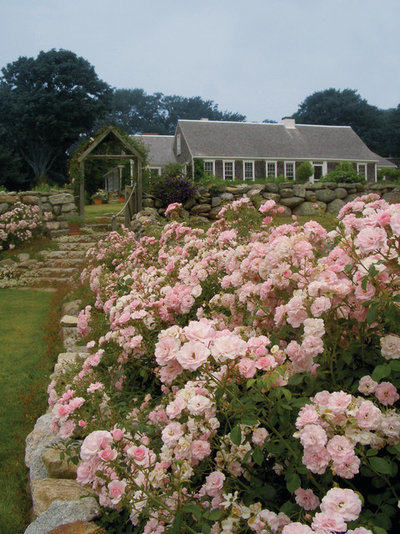
Zeterre Landscape Architecture
A neatly contained rose garden would not be out of place in this landscape style. It would offer color outside as well as flowers for your home's interior. If you're looking for a modern, fragrant update on a traditional rose, consider the David Austin varieties.
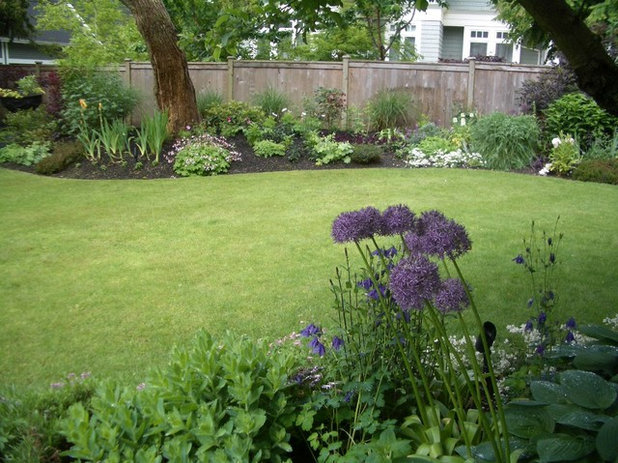
Glenna Partridge Garden Design
No matter how large or small your space, an English landscape approach results in a garden that is cool, calm, and serene ... a place where you want to linger. What else can you ask for from a garden?
More garden styles





